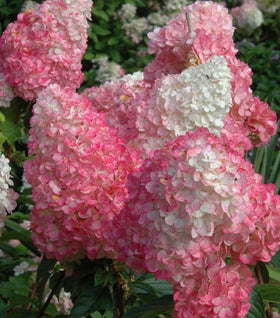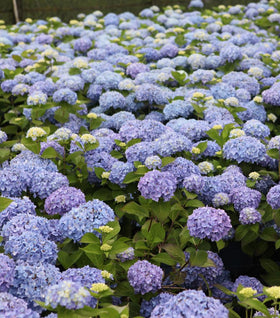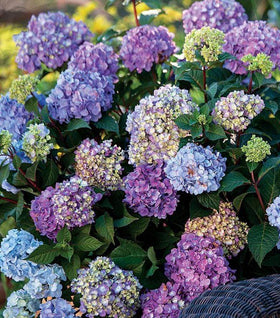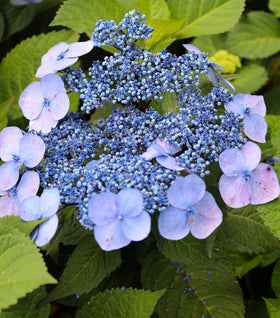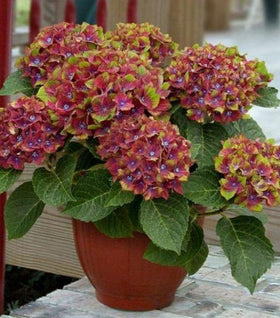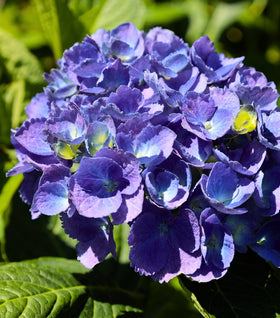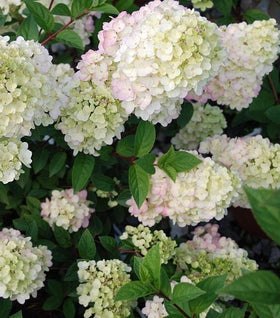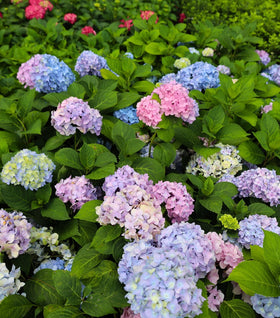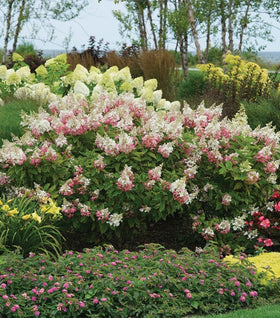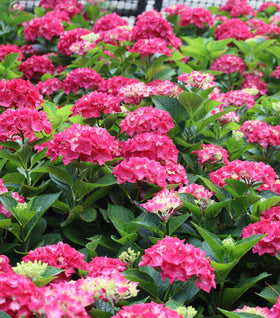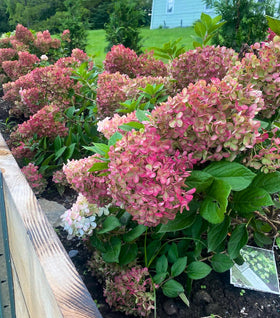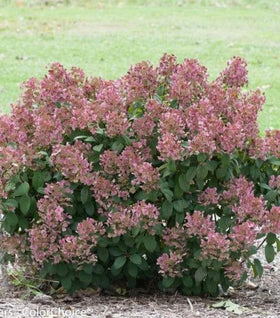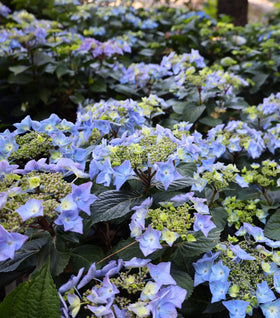Multicolored Hydrangea Shrubs for Sale Online
Multicolored Hydrangea Shrubs are an eclectic option when gardeners are choosing hydrangeas for their home landscape. Their variying color options are and fun pop of excitement to add to any existing garden for a pop of color or in a new garden as the focal point. Their flowers come in various shades of pink, blue, yellow, red, green,etc. Their varying color pallets compliment many different colored gardens.
Hydrangeas are highly tolerant of varying soil types and are easy to cultivate. They are a great and inexpensive way to instantly enhance the curb appeal of your home garden or commercial landscape. Their versatility can be used for foundation planting or as a focal point.
How to Care for Hydrangeas:
Finding the Perfect Location
The best time to plant hydrangeas is when temperatures are mild in the spring and fall. If you are planting in the spring, it is best to wait until the last frost of the season to avoid planting your shrubs when it's too cold. If you are planting in the fall, be sure not to plant too late because the first frost of the season could cause damage if they are not well acclimated yet. Your hydrangeas will peak in mid-summer through fall.
When planting, you should choose a location that receives partial shade. We recommend an area in your garden that receives about 5 to 6 hours of morning sunlight followed by periodical shade throughout the day. If you live in a warm climate, give your plant only 2 to 3 hours of the morning sun. Don't forget to space your shrubs out accordingly so you can allow your hydrangeas plenty of room to grow.
How To Plant Your Hydrangea
We recommend that you dig a hole slightly larger than the pot your hydrangea came in. Keep in mind that you need to allow your plant plenty of space to spread and grow to full maturity wherever you plant. Next, add a small amount of high-phosphorus fertilizer to the bottom of the hole to ensure your plant starts in its new home with plenty of nutrients. Place your hydrangea in the hole, making sure you loosen the roots with your fingers to give them room to breathe. Once the base of the plant is level with the ground level, cover it with soil and water. Hydrangeas love loamy and moist soil conditions, so make sure to check regularly, in the beginning, to ensure the soil is just right.
Hydrangeas Thrive off Water
These shrubs love water, and we recommend keeping them always hydrated. However, try not to confuse this with constantly watering your plant; this could lead to root rot because you are overwatering, and the plant cannot soak up all the excess moisture. Overwatering can also cause your plant not to produce flowers. To check if you need to water your plant, stick your finger 1 to 2 inches deep in the soil and if it is dry, you can water.
Hydrangeas in the Winter
You will want to protect your Hydrangea shrubs in the winter. Also, we recommend pruning off any dead stems and blooms to allow new growth to occur in the next growing season. Add a layer of mulch, leaves, or pine straws on top of the soil about 6 to 8 inches high. Doing so will help protect your plant from cold nights, winter winds, temperature changes, etc.
Propagating Hydrangeas
A reliable way to propagate is by root cuttings; you will get the most effective outcome. It is best to do this in the early summer to ensure you are not messing with the growing season. Take a 5 to 6-inch cutting from a non-flowering branch and remove the bottom leaves. Also, reduce the size of any remaining large leaves by half.
Next, dip the cuttings in a powdered rooting hormone and insert them into a six-inch pot of most sand and potting mix. Water thoroughly to ensure your cutting's soil is moist but not soaking. Place it in an area with shade and some bright, indirect sunlight. Your cuttings should begin to root in about 2 to 3 weeks. You will know roots are forming if the stem resists a slight tug from you.

